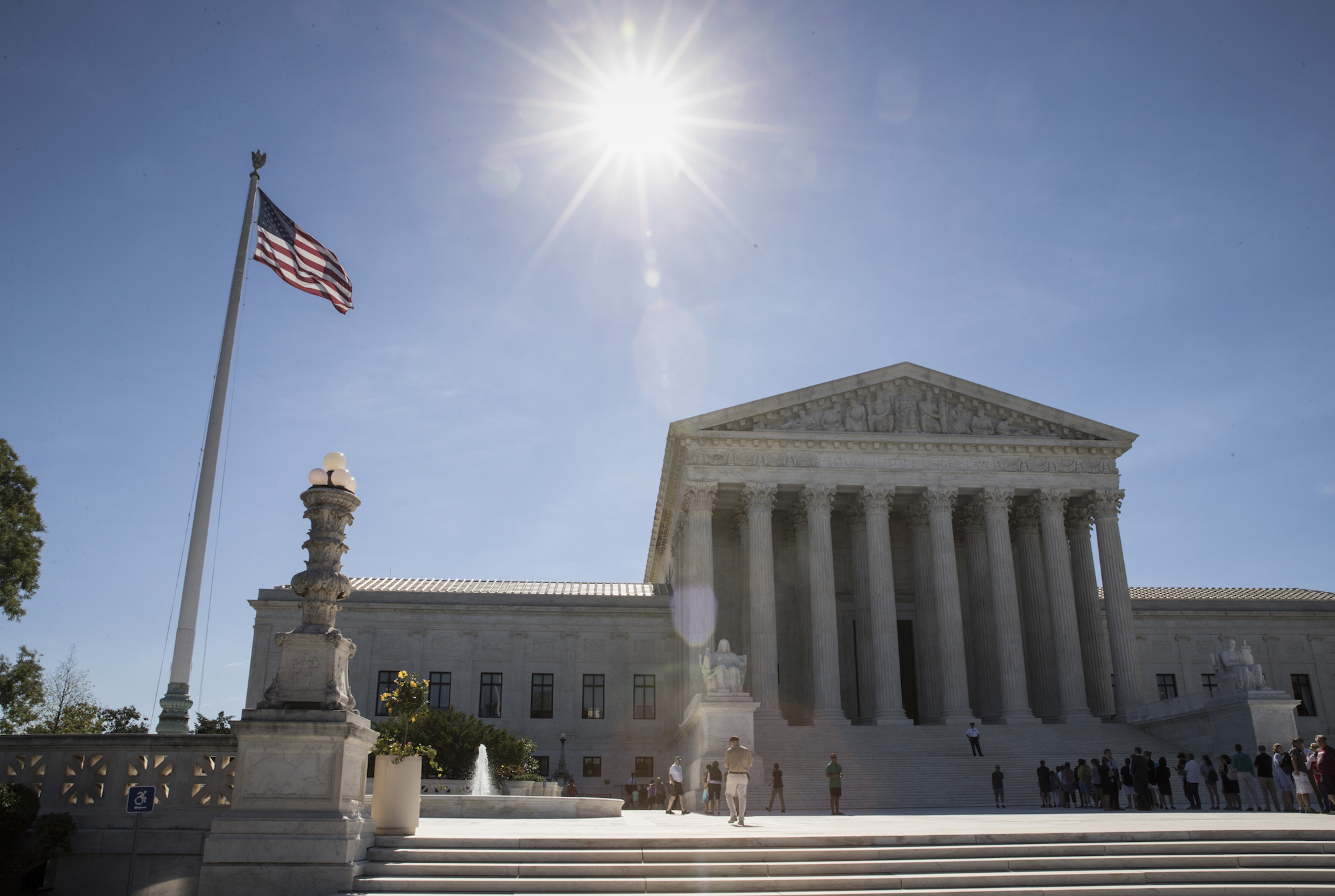The Supreme Court on Tuesday heard oral arguments for a long-awaited case on partisan gerrymandering, the outcome of which could essentially overhaul the American election process.
Gerrymandering has become an increasingly divisive issue in recent years, as lower courts have begun striking down what they view as overtly partisan redistricting that tilt elections towards the political parties that draw their districts’ maps.
So far, the justices appear sharply divided over whether they should intervene in instances of extreme gerrymandering, with all eyes on Justice Anthony Kennedy, who is viewed as the swing vote in the case.
Here’s what you need to know:
What is gerrymandering?
Gerrymandering refers to the practice of drawing political districts that give one party a lopsided advantage over the other in an election.
Boundaries for state and federal districts are redrawn every 10 years following the federal census to ensure each district contains roughly the same number of people. Usually, the party in power is the one in control of the redistricting - meaning both Republicans and Democrats have benefited from gerrymandering.
Legislators use two main strategies to gerrymander districts: packing and cracking. Packing sweeps members of a particular group into one district, so as to allow the other party to win the leftover districts. Cracking does the opposite - it splits a single group across multiple districts, diminishing its voting power.
Another concept, which is at the heart of the case the Supreme Court heard on Tuesday, is known as the "efficiency gap." It measures roughly how many votes are determined to be "wasted" - meaning they don't contribute to an election win - as a result of the gerrymandering.
Gill v. Whitford
The case before the justices concerns a Wisconsin electoral map drawn by the state's Republican-controlled legislature after the 2010 census. That map allowed Republicans to win a whopping 60 of State Assembly's 99 seats, despite Republican candidates winning just 48.6% of Wisconsin votes statewide - Democratic voters argued that this outcome clearly demonstrated an efficiency gap that disadvantaged the Democratic party.
A three-judge Federal District Court panel sided with Democratic voters after they sued, ruling that the Republican-drawn map unconstitutionally slanted the election in favor of Republicans.
But Wisconsin officials appealed the ruling, arguing that Democratic voters had effectively gerrymandered themselves by packing into cities, whereas Republicans were more evenly distributed throughout the state.
Although the lower court had ordered Wisconsin officials to draw up a new redistricting plan by the fall, the Supreme Court put a hold on that order.
Where do the justices stand on the issue?
The case is widely expected to come down to Justice Anthony Kennedy, with the remaining eight justices evenly divided along conservative-liberal lines.
During opening arguments on Tuesday, Kennedy appeared skeptical when asking questions of Wisconsin's lawyers, and asked no questions of the lawyer representing Democratic voters, according to media reports.
Some of the court's conservative justices expressed concern that finding Wisconsin's map unconstitutional - a move that could be viewed as siding with Democrats - could damage the court's legitimacy before the public.
"That is going to cause very serious harm to the status and integrity of the decisions of this court in the eyes of the country," Chief Justice John Roberts said.
Yet the more liberal justices questioned whether allowing Wisconsin's gerrymandering practice to continue would undermine the democratic process itself.
"I would like to ask you what's really behind all of this," Justice Ruth Bader Ginsburg asked. "The precious right to vote, if you can stack a legislature in this way, what incentive is there for a voter to exercise his vote? Whether it's a Democratic district or a Republican district, the result - using this map, the result is preordained in most of the districts."
